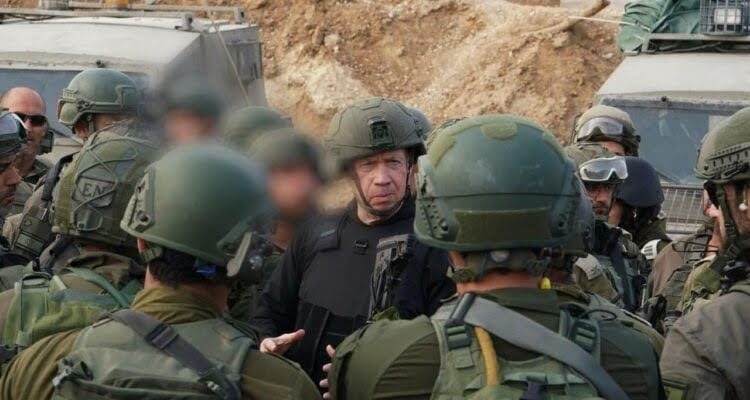A Newsweek article by John Spencer, the chair of urban warfare studies at the Modern War Institute (MWI) at West Point, asserts that “Israel has taken more measures to avoid needless civilian harm than virtually any other nation that’s fought an urban war.”
Spencer added that “in fact, as someone who has served two tours in Iraq and studied urban warfare for over a decade, Israel has taken precautionary measures even the United States did not do during its recent wars in Iraq and Afghanistan.”
“I say this not to put Israel on a pedestal or to diminish the human suffering of Gazans but rather to correct a number of misperceptions when it comes to urban warfare.
First is the use of precision guided munitions (PGMs). This term was introduced to nonmilitary audiences during the Gulf War, when the U.S. fired 250,000 individual bombs and missiles in just 43 days. Only a very small fraction of those would fit the definition of PGMs, even though common perceptions of that war, and its comparatively low civilian casualty rate, was that it was a war of precision.
Let’s compare that war, which did not ignite anywhere near the same level of outrage internationally, to Israel’s current war in Gaza. The Israeli Defense Force has used many types of PGMs to avoid civilian harm, including the use of munitions like small diameter bombs (SDBs), as well as technologies and tactics that increase the accuracy of non-PGMs. Israel has also employed a tactic when a military has air supremacy called dive bombing, as well as gathering pre-strike intelligence on the presence of civilians from satellite imagery, scans of cell phone presence, and other target observation techniques. All of this is to do more pinpoint targeted to avoid civilian deaths. In other words, the simplistic notion that a military must use more PGMs versus non-PGMs in a war is false.
A second misperception is a military’s choice of munitions and how they apply the proportionality principle required by the laws of armed conflict. Here there is an assessment of the value of the military target to be gained from an act that is weighted against the expected collateral damage estimate caused by said act. An external viewer with no access to all information cannot say such things as a 500-pound bomb would achieve the military mission of a 2,000-pound bomb with no mention of the context of the value of the military target or the context of the strike—like the target being in a deep tunnel that would require great penetration.
Third, one of the best ways to prevent civilian casualties in urban warfare is to provide warning and evacuate urban areas before the full combined air and ground attack commences. This tactic is unpopular for obvious reasons: It alerts the enemy defender and provides them the military advantage to prepare for the attack. The United States did not do this ahead of its initial invasion of Iraq in 2003, which involved major urban battles to include in Baghdad. It did not do this before its April 2004 Battle of Fallujah (though it did send civilian warnings before the Second Battle of Fallujah six months later).
By contrast, Israel provided days and then weeks of warnings, as well as time for civilians to evacuate multiple cities in northern Gaza before starting the main air-ground attack of urban areas. The Israel Defense Forces (IDF) employed their practice of calling and texting ahead of an air strike as well as roof-knocking, where they drop small munitions on the roof of a building notifying everyone to evacuate the building before a strike.
No military has ever implemented any of these practices in war before.
The IDF has also air-dropped flyers to give civilians instructions on when and how to evacuate, including with safe corridors. (The U.S. implemented these tactics in its second battle of Fallujah and 2016-2017 operation against ISIS in Mosul.) Israel has dropped over 520,000 pamphlets, and broadcast over radio and through social media messages to provide instruction for civilians to leave combat areas.
Israel’s use of real phone calls to civilians in combat areas (19,734), SMS texts (64,399) and pre-recorded calls (almost 6 million) to provide instructions on evacuations is also unprecedented.
The IDF also conducted daily four-hour pauses over multiple consecutive days of the war to allow civilians to leave active combat areas. While pauses for civilian evacuations after a war or battle has started is not completely new, the frequency and predictability of these in Gaza have been historic.
Another historical first in war measures to prevent civilian causalities was Israel’s distribution of IDF military maps and urban warfare graphics to assist civilians with day to day evacuations and alerting them to where the IDF will be operating. No military in history has ever done this.
The reality is that when it comes to avoiding civilian harm, there is no modern comparison to Israel’s war against Hamas. Israel is not fighting a battle like Fallujah, Mosul, or Raqqa; it is fighting a war involving synchronous major urban battles. No military in modern history has faced over 30,000 urban defenders in more than seven cities using human shields and hiding in hundreds of miles of underground networks purposely built under civilian sites, while holding hundreds of hostages.
Despite the unique challenges Israel faces in its war against Hamas, it has implemented more measures to prevent civilian casualties than any other military in history.
The sole reason for civilian deaths in Gaza is Hamas.”
Watch an intriguing discussion between Spencer and Prime Minister Binyamin Netanyahu below:
A very good discussion about the difficulties of urban warfare and how Israel is overcoming them https://t.co/ClEFPlDxfX
— David Boxenhorn (@davidboxenhorn) March 18, 2024
(YWN Israel Desk – Jerusalem)












One Response
Mazel Tov …1 person admitting the truth .They’ll say he’s making it up . How Newsweek printed this is unbelievable